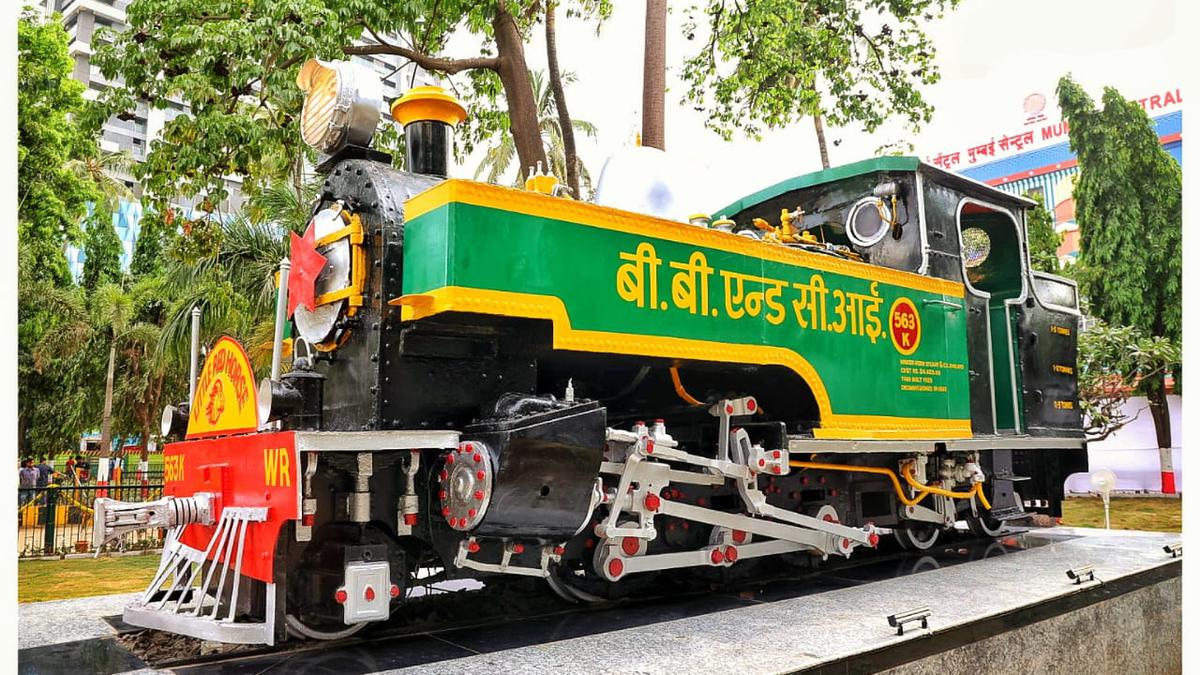
A heritage steam locomotive and lawn outside Mumbai Central station
The Hindu
A heritage steam locomotive, a symbol of development and modernity through the 19th and 20th centuries, was repaired and repainted to its old-world glory along with a heritage lawn, outside the Mumbai Central railway station by the Western Railway (WR)
A heritage steam locomotive, a symbol of development and modernity through the 19th and 20th centuries, was repaired and repainted to its old-world glory along with a heritage lawn, outside the Mumbai Central railway station by the Western Railway (WR). It has been open for the general public from April 15.
The steam locomotive, ‘Little Red Horse’, was manufactured in 1929 by M/s. Kerr Stuart & Co. in England. It was purchased by Bombay, Baroda and Central India Railway for ₹34,423. It was maintained at Pratapnagar and operated between Dabhoi-Miyagam line in Vadodara division, which is considered the oldest narrow gauge line in Asia. The locomotive was running since 1931 but was decommissioned. It was laid to rest at the Bombay Central station during the Platinum Jubilee year in 1991.
It all started when Niraj Verma, divisional railway manager of the Western Railway’s Mumbai Central division, saw an old black and white picture of the Mumbai Central railway station, then known as Bombay Central. He called, “I had seen a black and white picture of 1929 of the Mumbai Central station somewhere in Nandurbar in western Maharashtra. In that picture, I saw an open garden right opposite the Mumbai Central station. When I inquired about that space I learnt that it was because of the ongoing metro work and due to an increase in the number of passengers in the last couple of decades. This garden that had once been beautiful was now a dumping yard.”
The work started sometime in mid-February with the help of very little departmental labour to remove the debris and repaint the surfaces. “The easiest thing about restoring a park is that you just have to remove and not build,” he said.
The mechanical department of WR repainted the corroded parts of the steam locomotive. An artificial steam was introduced using a fogging machine, a recorded sound of whistle, and chugging was introduced. All headlights, tail lights and dome lights were provided using fixed power supply, as a part of restoration. The engineering department of WR redeveloped the garden, created a platform and provided a fence around the 1,400-square metre lawn. The garden at the entrance of the station exhibits the Ashoka Emblem which has also been beautified with glass enclosure replacement and landscaping.
Mr. Verma explains that one of the things gaining pace over the Mumbai railway division is the restoration of original heritage buildings the way they had been built, especially because they were in tandem with the local art and material. “We are now striving to move away from concrete and steel. The idea is to reconnect with nature and tell you that what we have in this city is not just hustle and bustle. There was calm in the city where people would meet on the lawn and not in the mall,” he added.













